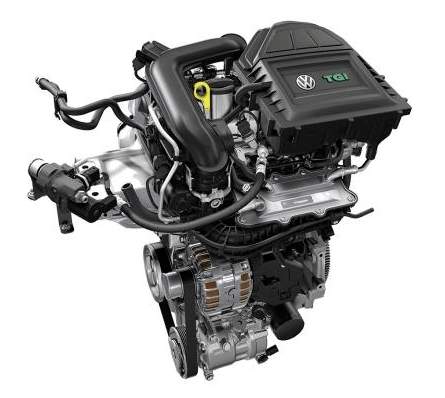Volkswagen says it is presenting a coasting function for internal combustion engines with a “Coasting – Engine off” function that shuts off the engine completely and a new, compact three-cylinder natural gas engine for the Polo at the 38th Vienna Motor Symposium.
In the case of electric power, the automaker is also highlighting the spectrum of ranges from the new, affordable micro hybrid system all the way to further optimized battery-powered propulsion.
“Partially and fully electric drive systems form a key pillar of our drive system strategy,” explains Friedrich Eichler, head of Volkswagen powertrain development, who is speaking at the Vienna Motor Symposium. “Our range of technology, especially that available for the Golf, now covers all customer preferences. The new ‘Coasting – Engine off’ micro hybrid system represents a low-cost level of electric-powered motoring on a 12 V basis.”
In the new Golf TSI BlueMotion, which launches this summer, the system works in tandem with a model DQ200 DSG gearbox. In a speed range of up to 130 km/h, it offers the driver hybrid-style characteristics: lift off the throttle, and the Golf can coast with the engine completely deactivated.
As reported, this new Volkswagen system adds a compact lithium-ion battery to the 12 V vehicle electrics, with the battery supplying the electric consumer units with power when coasting. A so-called Q-diode regulates the current flow between the lithium-ion and lead-acid batteries. At the end of the coasting phase, the Golf TSI BlueMotion’s engine, a highly efficient 1.5 TSI Evo1, is started in one of several different ways, depending on driving speed and situation.
In the middle of the electric power range is the plug-in hybrid concept of the Golf GTE4 and, at its top end, the 100% battery-powered drive system, as offered in the new e-Golf. In this latest upgrade, the new e-Golf’s electric motor delivers 100 kW of power and 290 Nm of torque and 15 kW and 20 Nm, respectively, more than before. The e-Golf now accelerates from 0 km/h to 100 km/h in just 9.6 seconds, and its top speed has gone up by 10 km/h to 150 km/h.
With recent improvements, the capacity of the lithium-ion battery system has also been increased from 24.2 kWh to 35.8 kWh. This results in a big increase in range in the NEDC cycle – from 190 km previously to now up to 300 km.
Volkswagen says it is taking on the next big step in the switch to electric power using the all-electric architecture. The first model using this new drive system and connectivity architecture will be launched in 2020. The BUDD-e5, I.D.6 and I.D. BUZZ7 concept cars that the brand has already unveiled give a look ahead to the great potential of the new architecture.
“The all-electric architecture combines local zero-emission driving with superb long-distance mobility,” says Eichler. “It forms the basis for our new generation of electric vehicles that we will be offering globally in high volume.”
Volkswagen is also making sustainability moves with compressed natural gas propulsion.
Dr. Wolfgang Demmelbauer-Ebner, head of Volkswagen petrol engine development, outlines the subject in his symposium speech as follows: “Due to its chemical composition, natural gas as a fuel already reduces CO2 emissions if it comes from fossil sources. If, however, it is produced in a sustainable way – for instance, as biomethane from agricultural waste – then looked at from well to wheel, it facilitates a form of mobility that produces appreciably less CO2.
“We use the term ‘e-gas’ to describe synthetically produced CNG that is made out of water and CO2 from renewable power generation’s excess current,” he says. “E-gas is ideal for making renewable power usable for the transport sector and for storing it. It is, in practical terms, a partner in the switch to renewable forms of energy.”
A special feature of the new three-cylinder turbocharged engine with a cubic capacity of 1.0 liter and high torque of 66 kW (90 PS) that is being shown at the symposium is its bivalent concept: It can be run on petrol or CNG. In gas-powered mode, it works in a particularly low-emission manner – and that applies to both CO2 and NOx particulate emissions. The compact 1.0 TGI is a new engine specification for the small car class in the Volkswagen Group.
The company says its activities promoting CNG drive systems go well beyond technical solutions. In addition to the group’s extensive range of models, Volkswagen says it is also conducting an intensive dialogue with energy providers, the gas industry, other OEMs and federal government ministries to explore CNG fuel.





